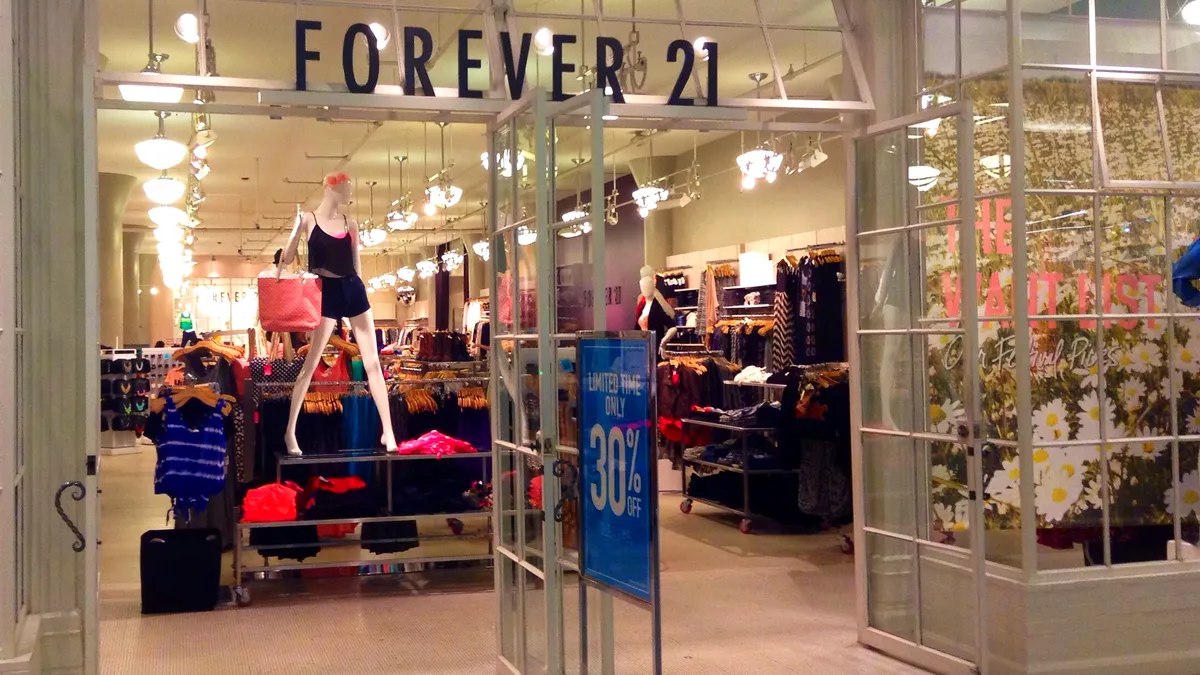In general, sales of apparel have been decimated during the pandemic, hurting specialty retailers and department stores alike. Consumers saved their shrunken clothing budgets for activewear, outdoor gear and athleisure, and many retailers pivoted to meet that demand.
That affected children's apparel as well, according to research from IBIS World, which sees declines continuing for a few more years, if slowing down from the steeper decreases of last year. But Janie and Jack, an upscale children's clothing brand that just spent a fleeting two years under Gap Inc.'s umbrella, saw only "subtle" changes in demand and is doing fine, says its new president, Shelly Walsh.
"In this pandemic, we didn't really see a change in buying habits," Walsh said by video conference. "So I think that's a really important part about our brand specifically, is that she still wants to dress her child well and put together and polished and show them off. We're still selling Easter, holiday, family dressing and swim — we are selling all of it just like we always have. We did not really have to shift strategy and move into more casual and knit loungewear at all."
Walsh's title and position are new, but she represents continuity at the brand. She has managed Janie and Jack, an upscale sub-brand developed by Gymboree, as general manager since 2015, and before then as vice president of merchandising. When it was snapped up for $35 million by Gap Inc. during Gymboree's 2019 bankruptcy, she stuck around, so she's likely privy to what some of Gap Inc.'s plans may have been. Plus, Walsh is a Gap Inc. alum, having spent six years there in women's, maternity and children's before jumping to Gymboree to lead Janie and Jack in 2013.
But what she seems most excited about is the new opportunity, under yet another new owner. Gap's Janie and Jack acquisition was former CEO Art Peck's idea. With him gone the struggling apparel conglomerate, apparently not sharing his belief that it could provide a tidy path for growth, last week sold it to brand investment firm Go Global Retail for an undisclosed amount. The deal closed Friday.
Largely known for its clothing for babies and small children, Janie and Jack also sees opportunity in slightly older kids. A soft launch of tween sizes up to 16 for all genders is going well, according to Walsh.
"Think of another brand that's gone through two bankruptcies, a going-out-of-business sale, then COVID — and we are stable and business is great," Walsh said. "We're growing, and we just launched tween, and it's been fantastic. We have a huge lineup of partners, everybody's calling in."
Go Global founder and Managing Partner Jeff Streader would like things to go even better. Both Streader and Walsh see some opportunity to grab market share after the decline of Justice, which Ascena sold to Bluestar at a bankruptcy auction last year, after closing hundreds of Justice stores, though they note that Janie and Jack plays at the luxury end, while Justice is a mid-tier, mall-based store.
The company also has plans to to expand its wholesale operations, they said, including new partners in the U.S. yet to be announced. "And then we will go to the U.K., France and Italy," Streader said by video conference. "And we're going to play in the luxe space, so for us, it's really looking up-channel, in terms of price points, rather than down channel. Even though there's market opportunity there, I just want to stress that this is not a move to the middle market."
A longer runway for growth will be forged by improving the brand's technical abilities, Streader said. Technology at ModCloth, which Go Global bought from Walmart last year, and Janie and Jack was "underdeveloped," he said.
"We are going to invest in marketing technology, and we're going to invest in infrastructure for forecasting, planning and price optimization," he said. "And we're going to invest in e-commerce, which will help us build that user profile based upon whether she touches us on the site, she comes into the store, she's on even TikTok. We're going to be grabbing all of those different touches and building that profile for a more precise message. There won't be blanket messages 'Come for 20% off.' We're moving toward that precision, and it's an investment in [a customer data platform]."
That doesn't mean the brand will abandon brick and mortar. The company runs about 115 stores "in A locations" across the U.S. and will carefully open more. "The whole idea here is the traditional mall, enter on one end with an anchor and walk through a dark or artificially lit mall, is not where we want to be," he said. "We want to move more to the experiential life-center malls where there's more dining and entertainment and less shopping."






















